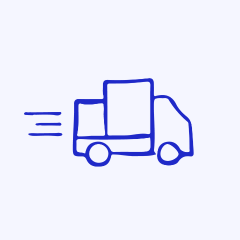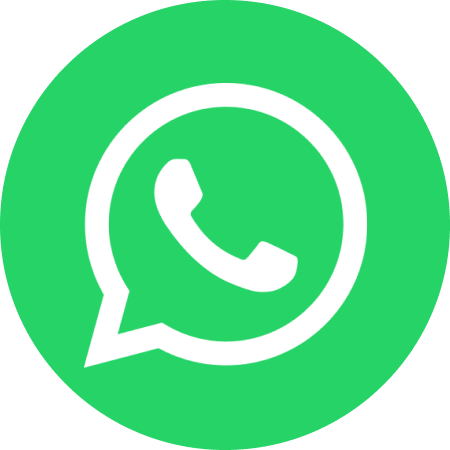Dry skin and dehydrated skin are two different skin problems that require specific care. The former is often due to a lack of sebum, while the latter is caused by a water deficiency. Both skin types can show signs of tightness, flaking, and even itching. Knowing the difference between the two is essential for proper treatment. Discover how to restore balance to your skin, whether it's dry or dehydrated.
Understanding Dry and Dehydrated Skin
Dry and dehydrated skin are two distinct skin conditions, each with its own unique needs. Dry skin is generally due to a lack of lipids, making it more susceptible to external aggressors. In contrast, dehydrated skin lacks water, affecting its suppleness and radiance.
To maintain healthy skin, it's crucial to understand these differences. A tailored skincare routine is necessary for each type:
- For dry skin, opt for products rich in oils to nourish and strengthen the skin barrier.
- For dehydrated skin, choose skincare products containing moisturizing agents like hyaluronic acid to restore hydration. For this, there's nothing better than Time To Repair Regenerating Night Cream . This treatment, enriched with hyaluronic acid, will be your ally for radiant, more hydrated, and firmer skin.
External factors such as climate or heating can exacerbate these conditions. In winter, it's especially important to adjust your routine to protect your skin from damage.
Causes of dry and dehydrated skin
There are many causes of dry, dehydrated skin. Dry skin often results from insufficient sebum production, which weakens the skin's protective barrier. This can be due to genetics or environmental factors such as cold weather. Symptoms include tightness and flaking.
In contrast, dehydrated skin lacks water, not lipids. This problem is often temporary and can affect all skin types, even the oiliest. Causes vary, including stress, poor diet, and the use of unsuitable cosmetics.
To alleviate these discomforts, it's essential to adapt your skincare routine. For example, choose products rich in moisturizing agents to replenish moisture and restore the skin's hydrolipidic film.
How to differentiate between dry and dehydrated skin?
Signs of dry skin
Dry skin often has distinct characteristics that make it easy to recognize. It's typically rough to the touch and may have flakes, a visible sign of a lack of lipids. These symptoms are exacerbated in winter, as the cold weather aggravates the condition.
Signs to watch for include a persistent feeling of tightness, especially after washing. Skin may also appear dull and lack radiance. Pores are often tightened, and skin texture appears finer. In some cases, redness may appear, indicating a certain fragility.
To help soothe these discomforts, incorporate products rich in nourishing ingredients like shea butter or vegetable oils into your routine. Choosing the right skincare products helps strengthen the skin barrier and prevent external aggressions. Remove your makeup with Time To Detox balm, rich in shea butter , moringa oil, and aloe vera.
Signs of dehydrated skin
Dehydrated skin presents several distinctive signs that are essential to recognize. It often lacks suppleness and radiance, resulting in a dull appearance. Feelings of discomfort, such as tightness, are common, especially after cleansing. The skin may also display fine lines, particularly around the eyes and lips.
This condition can affect any skin type, including oily skin, as it is due to a lack of water rather than a lack of lipids. You may also notice redness or even scaling, especially in winter.
To help dehydrated skin, it's a good idea to use skincare products containing natural ingredients like hyaluronic acid. This helps restore moisture and improve skin texture.
How do you know if you have dry skin?
The test to differentiate between dry and dehydrated skin
To determine if your skin is dry or dehydrated, a quick test can help. Gently pinch the skin on your cheek and observe its reaction. If it wrinkles and fine lines appear, your skin could be dehydrated, lacking water. On the other hand, if the skin remains tight, without visible wrinkles, it is probably dry, suffering from a lack of lipids.
Here are some tips to better understand your skin type:
- Dry skin : often rough to the touch and prone to flaking, it requires products rich in nourishing oils to restore the skin barrier.
- Dehydrated skin : has fine lines of dehydration and a dull complexion, it needs moisturizing products containing ingredients like hyaluronic acid to restore radiance and suppleness.
Adapting care to these specific needs helps restore healthy and balanced skin.
Facial treatment for dry and dehydrated skin
Dehydrated skin, which cream?
To properly hydrate your face, it's essential to choose products tailored to your specific needs. Start by using a gentle cleanser to avoid damaging your skin. After cleansing, apply a hydrating serum rich in hyaluronic acid to replenish lost moisture.
Next, opt for a rich-textured moisturizer if your skin is dry, or a lighter formula if it's combination or oily. Look at the ingredients in the formula for ingredients like ceramides or plant oils that restore the hydrolipidic film.
Don't forget to protect your skin from the sun with daily sunscreen. Finally, once a week, pamper your skin with a hydrating mask for an extra boost of radiance. These simple steps help maintain supple and radiant skin.
The ideal face cream
When choosing the ideal face cream, it's crucial to consider your skin's specific needs. If you have dry skin, opt for a cream rich in lipids such as shea butter or vegetable oils, which intensely nourish and repair the skin barrier.
For dehydrated skin, choose formulas containing humectants like hyaluronic acid, which helps retain water in the epidermis. Here are some criteria to consider:
- Texture : light for oily skin, creamier for dry skin.
- Active ingredients : ceramides to strengthen the skin barrier, antioxidants to protect against external aggressions.
- Frequency of application : morning and evening for maximum effectiveness.
Adapt your choice according to the seasons, because cold and wind can accentuate dryness and dehydration.
Body care for dry and dehydrated skin
Body Moisturizer: How to Choose?
To choose a body moisturizer that's right for your skin, you first need to identify your skin type: dry, dehydrated, sensitive, or combination. Each type has its own specific needs. For example, for dry skin, opt for creams rich in lipids that strengthen the skin barrier. Ingredients to look for include:
- Shea butter : ideal for nourishing and softening the skin.
- Vegetable oils: such as sweet almond oil, which helps restore elasticity.
- Ceramides: to strengthen the skin's protective barrier.
For dehydrated skin, choose formulas containing hyaluronic acid, which retains water in the epidermis, providing long-lasting hydration. It's also beneficial to use creams with antioxidants to protect the skin from external aggressions.
Treatment of very dry areas of the body
To combat very dry areas of the body, it is essential to adopt a suitable skincare routine. Use products rich in moisturizing and nourishing agents to strengthen the skin barrier.
After showering, apply an emollient balm or cream to areas like elbows, knees, and feet. These parts of the body are often prone to increased dryness. Opt for products containing plant oils, such as sweet almond oil or shea butter, which intensely soothe and repair.
Also consider incorporating a few simple actions into your daily life:
- Stay hydrated by drinking water throughout the day.
- Use lukewarm water for your showers.
- Use a gentle cleanser to avoid damaging the skin.
These actions will help keep your skin soft and supple.
Oily, combination, dry skin: understanding the differences
The difference between oily skin and dry skin
Oily skin is characterized by excessive sebum production, resulting in a shiny and sometimes oily appearance. This overproduction is often due to overactive sebaceous glands. In contrast, dry skin lacks sebum, resulting in a feeling of tightness and a rough texture.
The pores of oily skin are generally larger, while those of dry skin are smaller. Here are some key differences to note:
- Oily skin : Increased shine, acne-prone, visible pores
- Dry skin : Tightness, flaking, lack of radiance
To care for each type, it's essential to adapt your routine. For example, using mattifying products for oily skin and nourishing treatments for dry skin can significantly improve its appearance and comfort.
The difference between combination skin and dry skin
Combination skin is characterized by a combination of oily and dry areas, usually with a shinier T-zone (forehead, nose, chin). It requires tailored skincare to balance these different areas. Conversely, dry skin lacks lipids and often feels tight and rough.
To better understand, here are some key distinctions:
- Hydration : Combination skin can be dehydrated, lacking water but not oil. Dry skin, on the other hand, has a lipid deficiency.
- Care : Use light products for the T-zone of combination skin, and rich creams for dry areas.
- Feelings : Dry skin often feels tight all over the face, while combination skin can feel oily in some areas and dry in others.
Adapting your routine based on these differences can help maintain balanced and comfortable skin.
Treating dry skin: the options available
To effectively treat dry skin, there are several options available. The use of lipid-rich creams is recommended to deeply nourish the skin. Vegetable oils such as sweet almond or shea butter are particularly beneficial.
For dehydrated skin, choose products containing moisturizing agents such as hyaluronic acid. They help retain water in the epidermis, providing long-lasting hydration.
Some practical tips to improve your daily routine:
- Apply moisturizer immediately after showering to seal in moisture.
- Limit hot showers which can exacerbate dryness.
- Drink enough water throughout the day to maintain skin hydration.
Adopting these simple steps helps restore the skin barrier and improve the appearance of your skin. By incorporating these tailored treatments, you'll promote softer, more comfortable skin.











